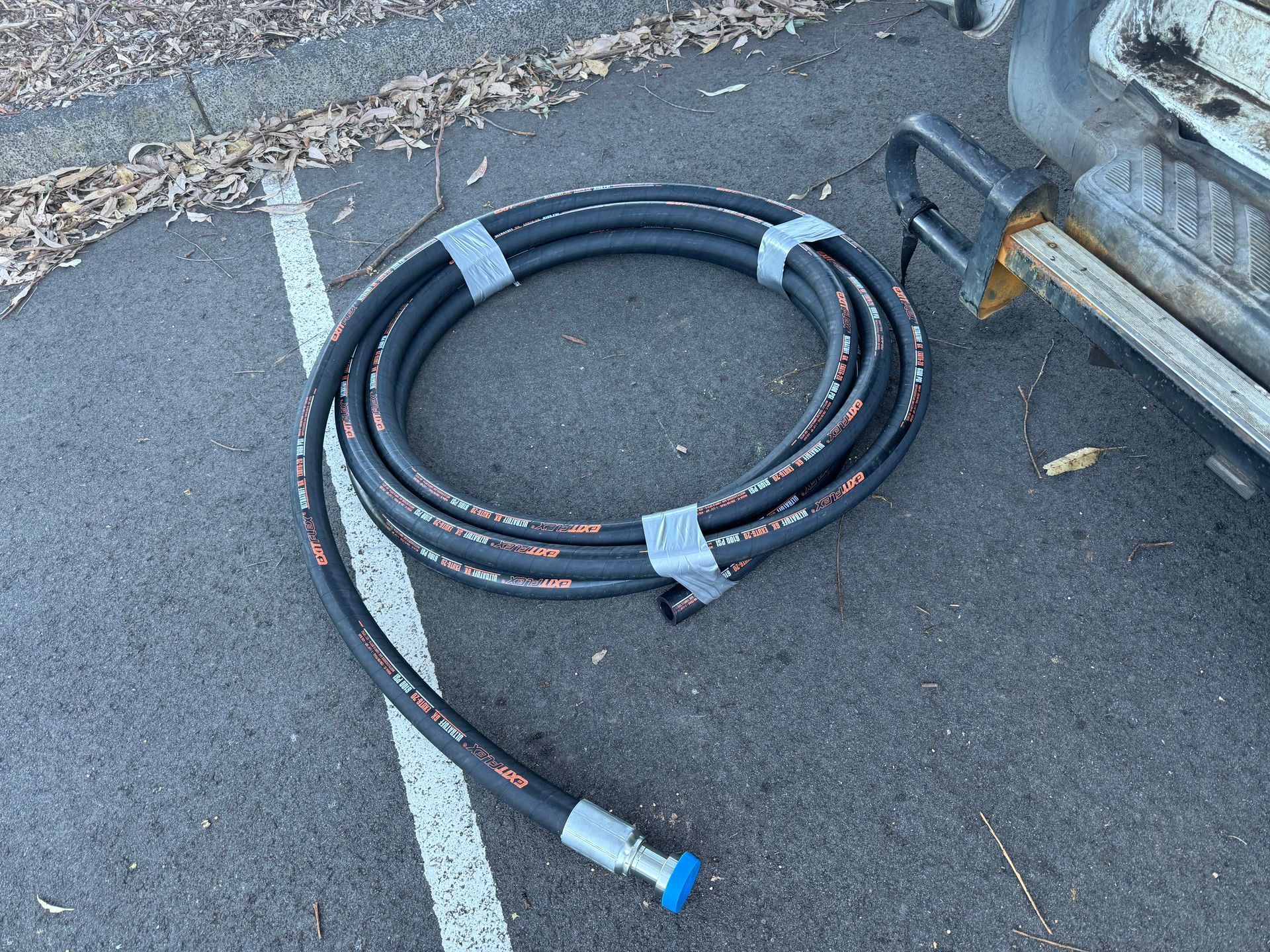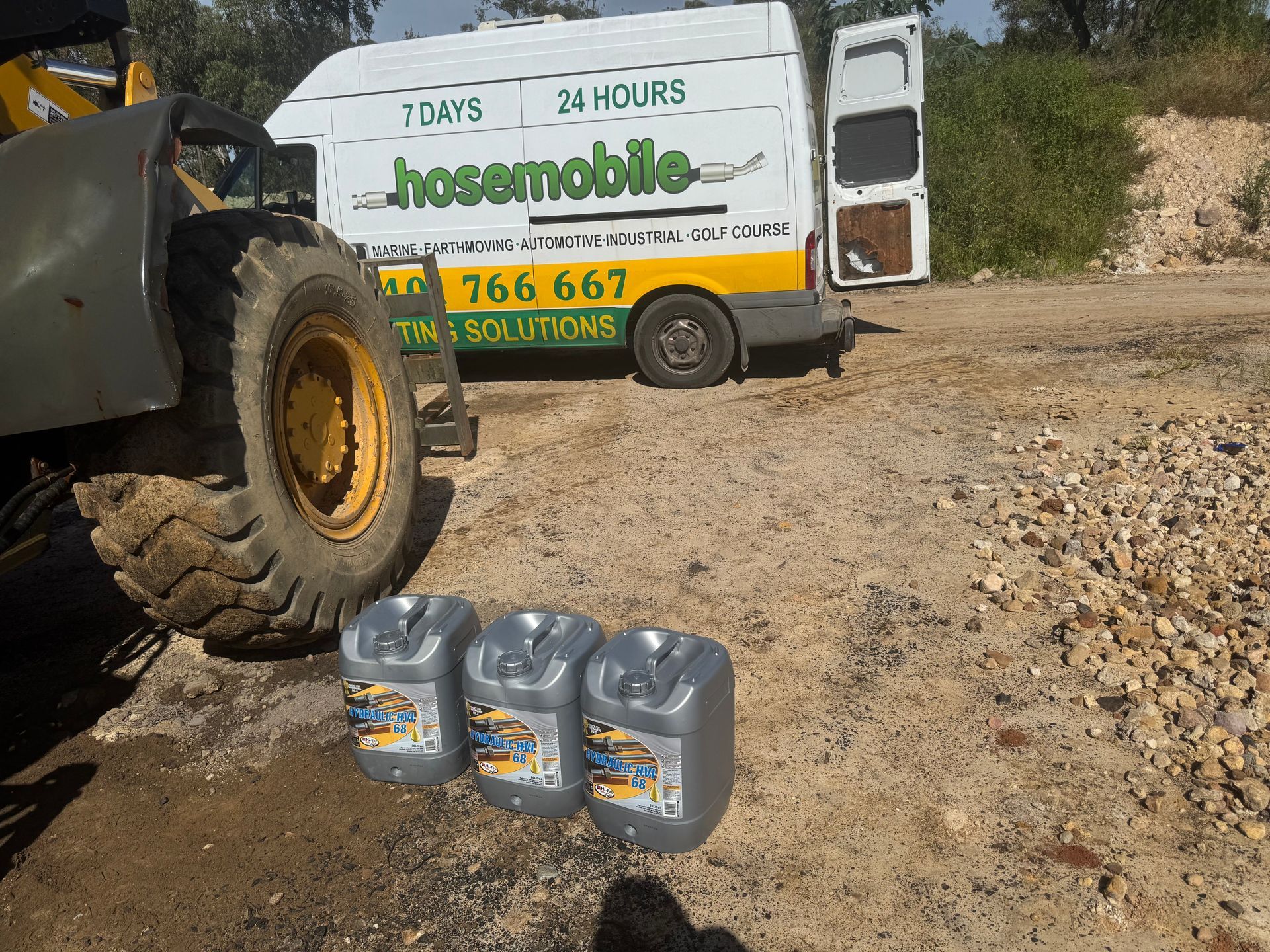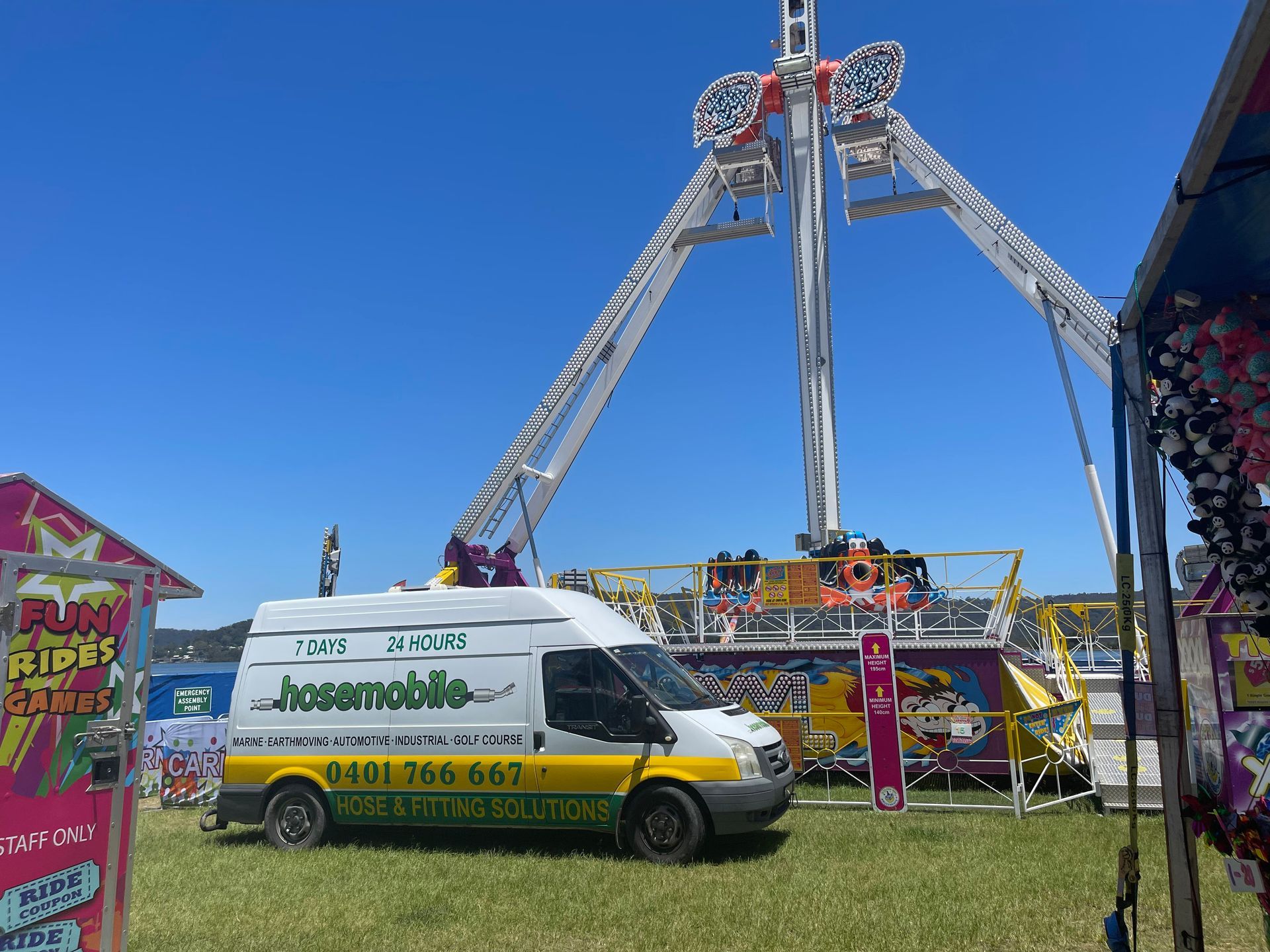Hosemobile
Fittings for Hydraulics in Tuggerah
- 24/7 Mobile Emergency Service
- Fully Equipped Mobile Workshop
- Extensive Repair & Maintenance Capabilities

Contact Us in Tuggerah
Thank you for contacting Hosemobile.
We will get back to you as soon as possible.
Oops, there was an error sending your message.
Please try again later.

Tuggerah Hydraulics
When machinery breaks down on the job, every minute counts—and that’s where Hosemobile comes in. Offering mobile hydraulic services across Tuggerah and surrounding areas, Hosemobile delivers fast, expert support directly to where it's needed.
Based in Kariong and backed by over 15 years of hands-on industry experience, the team specialises in on-site hydraulic repairs, hose replacements, and the installation of pressure-rated hydraulic fittings. Their fully stocked mobile workshops are built for tough conditions and fast response times, keeping local businesses moving with minimal disruption.
From construction sites and farms to workshops and warehouses, Tuggerah businesses trust Hosemobile for efficient service, quality parts, and technicians who understand the demands of local industry. Whether it’s a sudden breakdown or scheduled maintenance, the service is always delivered with professionalism and care.
To book a mobile hydraulic service in Tuggerah, contact 0401 766 667 today.
Support That Comes to You
Tuggerah operators rely on machinery that performs without fail—and when it doesn’t, they need support that’s fast, flexible, and reliable. Hosemobile brings the solution to the doorstep with mobile hydraulic servicing that includes hose replacements, fitting installations, and troubleshooting, all handled on-site.
There’s no need to transport equipment to a workshop, which saves time and reduces costs. Every service vehicle is equipped with a wide range of hydraulic hoses, fittings, tools, and components to get the job done in one visit. What makes the service stand out is the attention to detail and the experience behind every repair.
The technicians assess the full system, provide the right parts, and ensure everything is fitted securely and safely. Tuggerah customers benefit from the peace of mind that comes with professional service tailored to their industry and environment.
With a strong focus on reliability, efficiency, and convenience, this is hydraulic support designed to meet real-world demands.

Frequently Asked Questions
What are hydraulic fittings used for?
Hydraulic fittings are components used to connect hoses, tubes, and pipes in a hydraulic system. Their primary function is to maintain a secure seal under high pressure, ensuring hydraulic fluid flows efficiently between parts without leaking.
Fittings come in various styles—including straight, elbow, and tee—and may be threaded, flanged, or quick-connect depending on the application. They’re essential for maintaining system performance and safety, especially in heavy machinery where pressure can exceed thousands of PSI.
A properly fitted hydraulic connection supports reliable equipment operation and helps prevent costly breakdowns caused by leaks or pressure loss.
What are the most common types of hydraulic fittings?
The most common types of hydraulic fittings include JIC (Joint Industry Council), NPT (National Pipe Thread), BSP (British Standard Pipe), ORFS (O-Ring Face Seal), and SAE (Society of Automotive Engineers) fittings. Each type has unique features suited to different sealing methods and pressure ratings.
JIC fittings, for example, are widely used in construction and industrial equipment due to their reliable metal-to-metal seal. ORFS fittings are preferred for high-vibration environments as their O-ring design prevents leaks. Choosing the right fitting depends on factors like pressure requirements, fluid type, and equipment design.
How do I choose the right hydraulic fitting?
Choosing the right hydraulic fitting involves several considerations: thread type, hose size, pressure rating, sealing method, and application environment. First, it’s important to match the thread and connection type with your existing components.
The fitting must also be rated to handle the system’s pressure to avoid blowouts or leaks. Environmental factors—such as temperature, vibration, and fluid compatibility—also play a role in selecting materials (e.g., steel, brass, stainless steel).
If unsure, consulting the equipment manual or a hydraulic specialist can ensure you get the correct fitting for optimal performance and safety.




